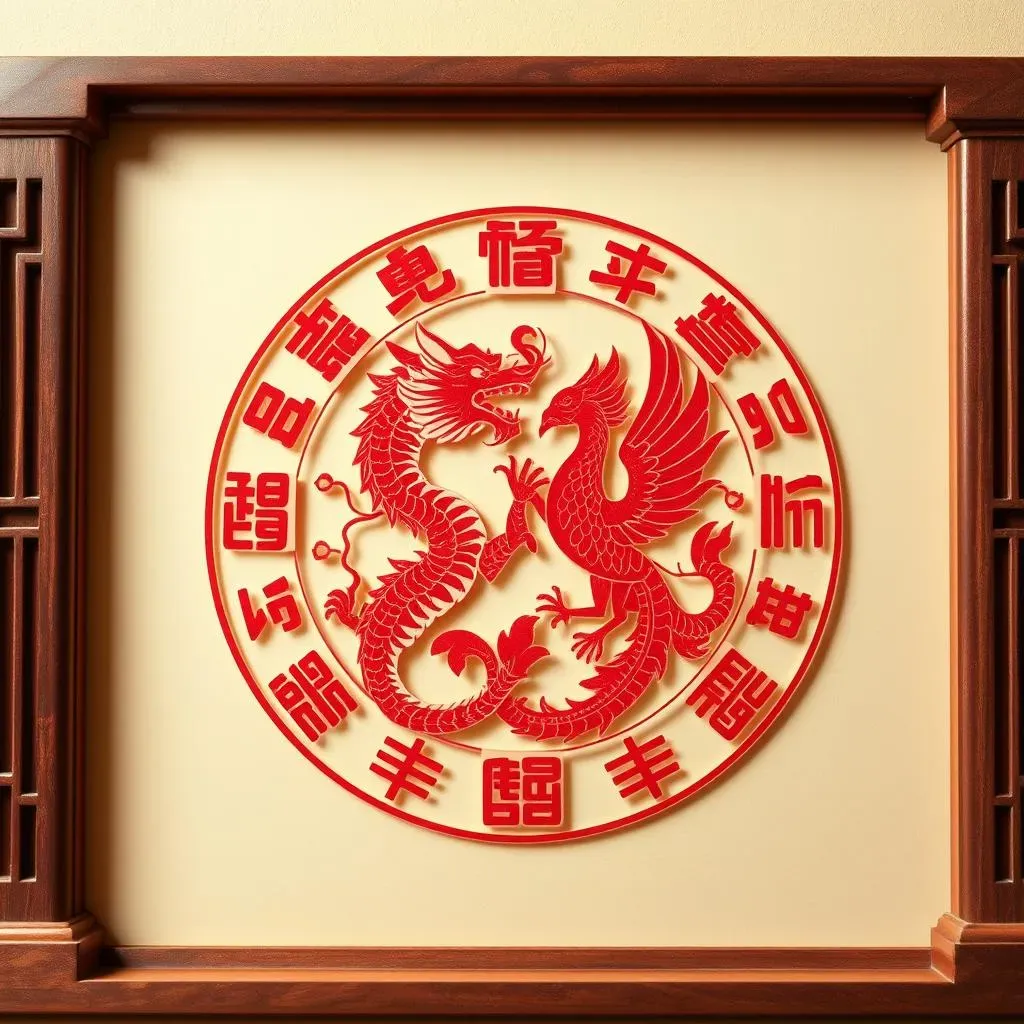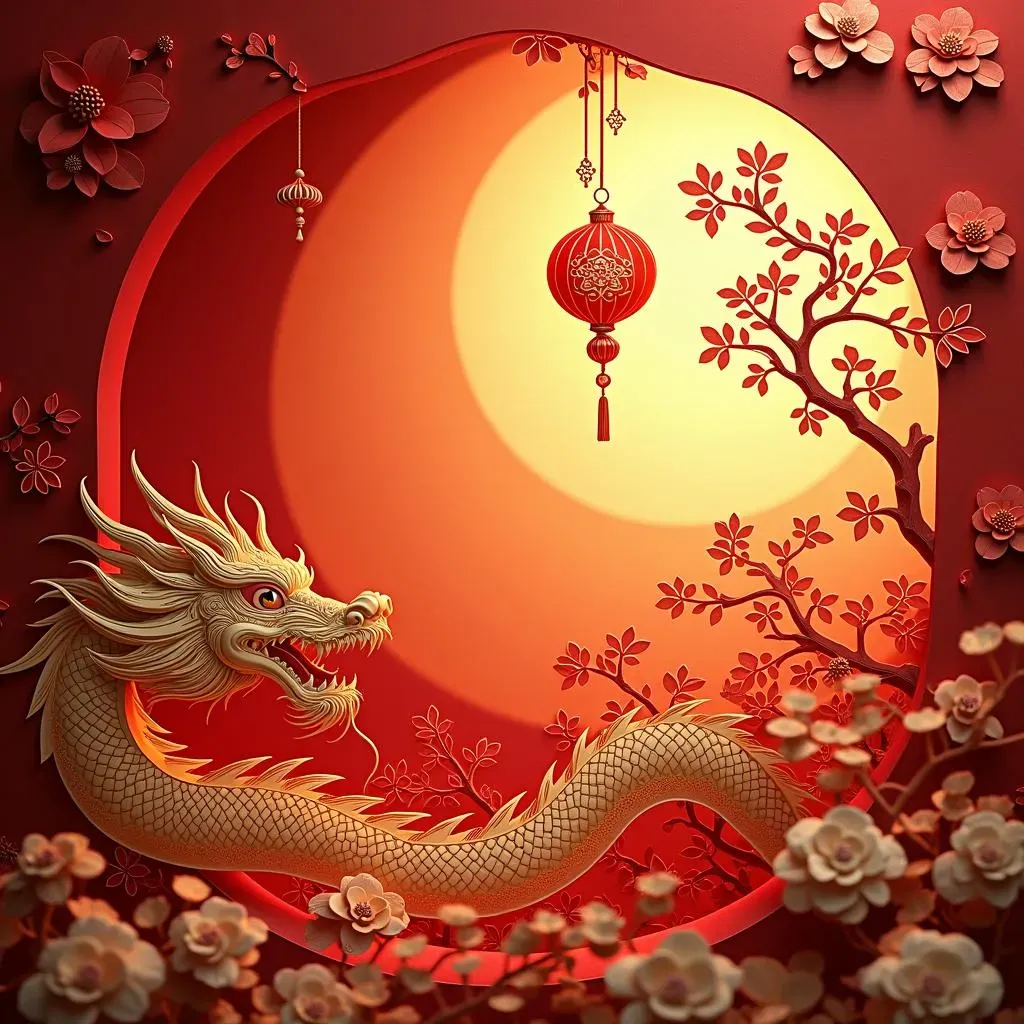Table of Contents
Have you ever gazed upon the intricate beauty of a Chinese paper cutting, also known as jianzhi, and wondered about the stories hidden within its delicate lines? This ancient art form, with roots stretching back centuries, is far more than just a pretty picture. It's a vibrant tapestry woven with cultural significance, symbolic meanings, and heartfelt wishes. In this article, we'll unravel the mysteries behind jianzhi, exploring the question: what does Chinese paper cutting symbolize? We'll journey through the common motifs, deciphering their rich meanings and understanding how they reflect Chinese values, beliefs, and traditions. From auspicious animals to characters representing good fortune and longevity, we will uncover the hidden language of these paper masterpieces. Prepare to be captivated as we delve into the captivating world of Chinese paper cutting, where every cut and fold speaks volumes about a rich and enduring culture. Get ready to appreciate the artistry and the profound symbolism embedded within each delicate design. Let's embark on this fascinating exploration together!
What Does Chinese Paper Cutting Symbolize: A Deep Dive into Cultural Meanings
The Power of Red: Luck, Festivity, and More
So, you're diving into the world of Chinese paper cutting symbolism? Fantastic! It's a fascinating journey. One of the first things you'll notice is the prevalence of red paper. It's not just a random choice; red holds immense cultural significance in China. It symbolizes luck, prosperity, happiness, and joy. Think of it as the visual equivalent of a celebratory firework – bright, bold, and impossible to ignore. During festivals like Chinese New Year, red paper cuttings are everywhere, transforming homes into vibrant celebrations of good fortune. You’ll find them adorning windows, doors, and walls, their cheerful hues adding to the festive spirit. Learning about the color red is a great place to start understanding the deeper meanings within jianzhi.
Want to learn more about creating your own festive designs? Check out our guide on paper cutting cards for stunning greetings!
Symbol | Meaning |
|---|---|
Red | Luck, prosperity, happiness, joy |
Gold | Wealth, riches, abundance |
Green | Growth, vitality, new beginnings |
Animals, Auspicious Symbols, and Family: A Deeper Look
Beyond the color, the specific imagery within the paper cuttings tells even more stories. Animals like the dragon (representing power and good fortune) and the phoenix (symbolizing grace and rebirth) are frequent motifs. Other auspicious symbols, often incorporating Chinese characters, add layers of meaning. For example, the character for "double happiness" (囍) is a staple at weddings, while the character for "longevity" (寿) is common in birthday celebrations. Even seemingly simple images like the lotus flower (representing purity and enlightenment) or the gourd (symbolizing fertility and abundance) are packed with cultural weight. The family unit is also a recurring theme, with images of children and families representing prosperity and continuity across generations. Understanding these symbols opens a window into the cultural values and beliefs of the Chinese people.
Intrigued by the intricate designs? Discover how to create your own with our paper cutting stencils!
- Dragon: Power, good fortune
- Phoenix: Grace, rebirth
- Lotus Flower: Purity, enlightenment
- Gourd: Fertility, abundance
Exploring Common Symbols in Chinese Paper Cutting and Their Significance
Exploring Common Symbols in Chinese Paper Cutting and Their Significance
Auspicious Animals: More Than Just Cute Critters
Let's talk animals! They're not just adorable additions to the paper cuttings; they carry powerful symbolic weight. The dragon, for instance, isn't your garden-variety lizard. It represents imperial power, strength, and good fortune. Seeing a dragon in a paper cut is like receiving a blessing of prosperity and might. The phoenix, equally majestic, symbolizes rebirth, grace, and beauty. It's a symbol of hope and renewal, representing the cyclical nature of life. Other animals, like the carp (symbolizing perseverance and success) or the deer (representing longevity and good health), add their own unique layers of meaning. Each animal choice is deliberate, carefully selected to convey a specific wish or aspiration.
Want to learn more about the history of this fascinating art? Check out our article on paper cutting origins!
- Dragon: Power, good fortune, prosperity
- Phoenix: Rebirth, grace, beauty, hope
- Carp: Perseverance, success
- Deer: Longevity, good health
Characters and Calligraphy: A Written Language of Wishes
Now, let's move on to the written word. Chinese characters are often incorporated into jianzhi, adding another layer of symbolic depth. The character for "double happiness" (囍), for example, is a must-have for wedding celebrations. It's a visual exclamation point of joy and marital bliss. The character for "longevity" (寿) is frequently seen on birthday decorations, expressing wishes for a long and healthy life. Other characters might represent wealth, prosperity, or good fortune, each carefully chosen to reflect the specific occasion or sentiment. The inclusion of calligraphy adds an element of elegance and artistry, transforming the paper cutting into a work of both visual and literary art.
Ready to try your hand at creating these intricate designs? Our paper cutting tutorials are perfect for beginners!
Character | Pinyin | Meaning |
|---|---|---|
囍 | xǐ | Double happiness |
寿 | shòu | Longevity |
福 | fú | Fortune, blessing |
The Enduring Legacy: How Chinese Paper Cutting Symbolism Continues to Evolve
The Enduring Legacy: How Chinese Paper Cutting Symbolism Continues to Evolve
Modern Interpretations and New Meanings
So, you're interested in how Chinese paper cutting symbolism has changed over time? That's a really insightful question! While traditional symbols remain deeply significant, jianzhi artists are constantly breathing new life into the art form. Modern artists are incorporating contemporary themes and ideas, blending traditional motifs with modern aesthetics. Think of it like a delicious fusion dish – the familiar flavors of tradition are enhanced by exciting new ingredients. You might see paper cuttings that incorporate elements of pop culture, reflecting contemporary social issues or celebrating modern achievements. This evolution shows the art form's adaptability and its capacity to remain relevant across generations. It's a testament to its enduring power and appeal.
Ever wondered about the different types of paper cutting? Learn more about the types of paper cutting here!
- Incorporation of pop culture references
- Exploration of contemporary social themes
- Blending of traditional and modern aesthetics
Global Influence and Cross-Cultural Exchange
Another fascinating aspect is the global influence on jianzhi. As the art form gains international recognition, it's inspiring artists worldwide. This cross-cultural exchange is leading to exciting new interpretations and fusions. Imagine paper cuttings that blend traditional Chinese symbolism with elements from other cultures – a truly beautiful and thought-provoking blend of artistic traditions. This global reach is not just about expanding the art's audience; it's about fostering understanding and appreciation for diverse cultural perspectives. The symbolism itself might take on new layers of meaning as it interacts with different cultural contexts. It's a wonderful example of art transcending geographical boundaries.
Looking for some creative inspiration? Check out our ideas for amazing paper cutting decorations!
Aspect | Impact on Symbolism |
|---|---|
Global recognition | Increased cross-cultural interpretations |
International collaborations | Fusion of traditional and global aesthetics |
Modern technology | New techniques and design possibilities |